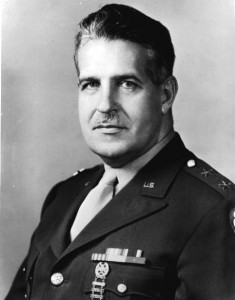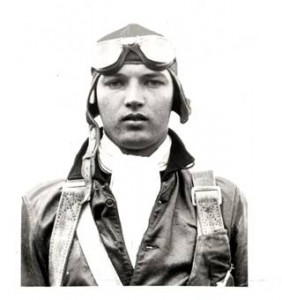Maj. Gen. Harold Greene and the Engineer Generals made the world a better place
Maj. Gen. Harold Greene flying in helicopter. (US Army)
Maj. Gen. Harold Greene, who was assassinated at Qargha Camp in Kabul on August 5 at the age of 55, belonged to a great American military tradition that the public, media and our beloved political class and pontificating pundits remain totally ignorant of – the engineer generals.
The astonishing success of the U.S. Armed Forces through two world wars and a host of smaller ones over the past 70 years was due in enormous part to the achievements of technical “engineer generals” like Greene.
They included tough, ruthless, Gen. “Hap” Arnold of the U.S. Army Air Force during World War II, Gen. Curtis LeMay who helmed the U.S. Air Force’s Strategic Air Command during the Cold War, Admiral Hyman Rickover, who created America’s nuclear Navy and Gen. Bernard Schriever who helmed the Minuteman ICBM program. Such men, like Gen. Greene today, are now a lot harder to find than they were half a century ago.
From the 1940s through the 1960s men like Gen. Schriever, the driving genius behind the Air Force’s amazingly successful and even cost-effective Minuteman solid-fuel inter-ballistic missile program in the 1950s and early 60s, seemed to grow on trees.

Gen. Leslie Groves already had a legendary reputation as the U.S. Army’s “go-to” man to get any apparently impossible engineering project done before he took on the Manhattan Project that built the entire industrial infrastructure necessary to produce the world’s first nuclear weapons.
He not only produced them in time for their operational use against Japan in 1945, he even had two entirely different but both successful designs ready. One of them worked on its first operational use on the city of Nagasaki without even being tested first.
And there were many others. Since the 1970s, jealous critics and hostile biographers have nitpicked the reputation of the U.S. Navy’s irascible, hard-driving engineer Adm. Rickover, the father of the nuclear Navy. Many argued that Soviet nuclear submarine designs outperformed Rickover’s designs, especially in speed.
But U.S. submarines far outperformed the Soviet ones in the crucial area of stealth and Rickover’s obsessive fixation on safety and quality control gave the U.S. nuclear navy a vastly superior safety record to the Soviet one.
This was especially crucial as in a democratic society, particularly after the Three Mile Island nuclear power station crisis in March 1979, a host of nuclear accidents or well-publicized near misses could have shut down the nuclear fleet completely.
And then there was Gen. Schriever’s long-time close friend and colleague Lt. Gen. Otto J. Glasser, director of the Atlas ICBM program in the 1950s.
Following his murder by a cowardly assassin on Aug 5, Gen. Greene has been rightly lauded for his qualities of technical excellence and quiet, decent, unassuming leadership and inspiration by example. His entire life served to preserve and spread those invaluable values to other dedicated senior officers in the U.S. Army and its fellow services to this day.

However, there have been many sobering changes in the U.S. Armed Services and the domestic American economy and general society that make the qualities necessary to produce a Harold Greene or a Bernard Schriever far more difficult to gather together.
For “Bernie” Schriever, “Rick” Rickover and their colleagues were the product of a contradiction that is entirely reversed in American society today. They first served when resources were scarce during the Great Depression. In those days military officers, especially engineers, had to get used to not only to lean budgets but also to improvising like crazy and being scrutinized over the reckless expenditure of nickels and dimes.
Yet at the same time, they were surrounded by what was, even in the 1930s, the greatest industrial economy the world had ever seen.
That generation of engineer-officers were saturated in the culture of getting things done as quickly and efficiently as possible and never mind bureaucratic barriers, budget constraints or congressional quibbles.
Greene served his career in a very different world. Today’s senior engineering and military officers are a lot more cautious about rocking the boat when they deal with private industry corporations than their predecessors were half a century ago. They were not shaped by years of having to smash through every bureaucratic constraint imaginable to get the job done and the weapons operable.
More subtly, the shrinkage of the old U.S. heavy industrial base over the past quarter-century, and its replacement by a high-tech orientated Information Technology-centered economy put the emphasis and the prestige for senior officers as well as civilian sector specialists on software and electronics, not the unfashionable old nuts-and-bolts of hardware engineering and rocket fuels.
The U.S. Armed Forces do not lack for intelligence, integrity, energy and education in their senior officers. But many of the more subtle qualities that made for an Otto Glasser or Bernard Schriever appear far harder to duplicate.
That was what made an officer like Gen. Greene so special. He was no glory hound eager to strut like a peacock on Capitol Hill or network TV. He was a quiet, decent, unassuming man who just rolled up his sleeves and quietly got the job done. To paraphrase Winston Churchill, we need more like him, for our need is great.

Martin Sieff is an editor at Sputnik, the Russian-owned news organization. He is the author of The Politically Incorrect Guide to the Middle East (2008), Gathering Storm (2014) and Cycles of Change: The Three Great Eras of American History and the Coming Crisis that will Lead to the Fourth (2014). Follow Martin on: @MartinSieff
